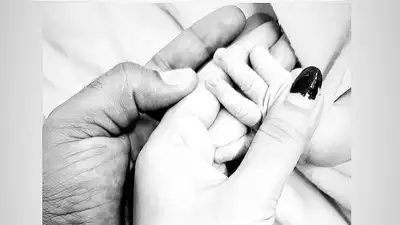Skin cancer is a prevalent form of cancer worldwide, often manifesting initially as a seemingly insignificant new mole or subtle skin alteration. Early detection significantly improves treatment outcomes. Recognizing potentially cancerous spots is crucial. Be vigilant for new growths, unusual moles, or non-healing sores.
The ABCDE method is a valuable tool for identifying melanoma, a serious type of skin cancer. It focuses on five key characteristics:
If a mole displays any of these characteristics, seek professional dermatological evaluation.

Persistent skin sores or scabs that repeatedly heal and reappear, or sores that fail to heal entirely, can be early indicators of basal or squamous cell carcinoma. These sores often present as pink, red, or slightly scaly patches and may bleed or ooze. Any sore lasting longer than three weeks or recurring in the same location warrants medical attention. Unexplained wounds or sores, particularly on the face, arms, or scalp, should be examined by a healthcare professional.

Moles are typically stable and painless. However, a mole that begins to itch, becomes tender, bleeds, or develops a crust could signify skin cancer. These symptoms often suggest inflammation or structural changes within the skin and should be evaluated by a skin specialist.

Skin cancer can arise from new growths rather than pre-existing moles. Be alert for small lumps, shiny bumps, or rough patches, particularly on sun-exposed areas. Promptly consult a skin specialist for any suspicious new formations.

If a mole's color suddenly changes or spreads to the surrounding skin, or if the mole develops fading edges, it could be a sign of melanoma. This irregular pigment spread suggests potential growth deeper or wider within the skin. Regularly compare moles over time, taking photographs if necessary, to detect any changes indicative of skin cancer.

Newer articles
Older articles
 Vitamin D Could Slash Tooth Decay Risk by 50%, Study Suggests
Vitamin D Could Slash Tooth Decay Risk by 50%, Study Suggests
 Indian Cricket Star Mukesh Kumar and Wife Divya Singh Announce Birth of Son
Indian Cricket Star Mukesh Kumar and Wife Divya Singh Announce Birth of Son
 Shubman Gill's Captaincy Under Fire: Bold Calls Needed After England Test Defeat
Shubman Gill's Captaincy Under Fire: Bold Calls Needed After England Test Defeat
 Microsoft Aims for Foldable Redemption with Novel Hinge Design to Rival iPhone and Android
Microsoft Aims for Foldable Redemption with Novel Hinge Design to Rival iPhone and Android
 Popular Finance YouTuber's Account Hacked, Bitcoin Scam Promoted: Security Lessons Learned
Popular Finance YouTuber's Account Hacked, Bitcoin Scam Promoted: Security Lessons Learned
 Esha Gupta Breaks Silence on Hardik Pandya Romance Rumors: 'We Were Just Talking'
Esha Gupta Breaks Silence on Hardik Pandya Romance Rumors: 'We Were Just Talking'
 Hollywood's Love Affair with India: Iconic Film Locations Revealed
Hollywood's Love Affair with India: Iconic Film Locations Revealed
 Rishabh Pant Aims to Surpass Virat Kohli in Test Century Tally During England Series
Rishabh Pant Aims to Surpass Virat Kohli in Test Century Tally During England Series
 Prithvi Shaw Credits Sachin Tendulkar's Guidance for Career Revival After Setbacks
Prithvi Shaw Credits Sachin Tendulkar's Guidance for Career Revival After Setbacks
 Ashada Gupt Navratri 2025: Unveiling Dates, Timings, Significance & Secret Rituals
Ashada Gupt Navratri 2025: Unveiling Dates, Timings, Significance & Secret Rituals